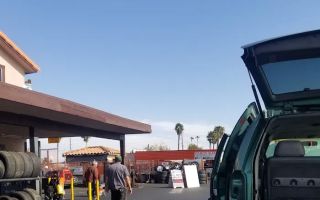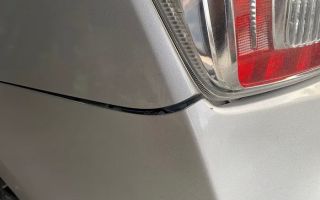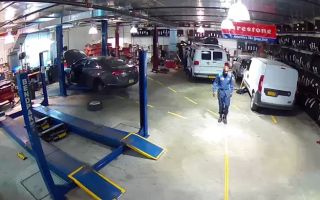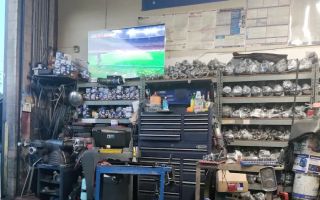One of the worst feelings when you’re stranded on the side of the road with a dead car battery is when your jumpstarter fails to work. I’ve been there myself, and I can tell you that frustration can quickly turn into panic, especially if you're in a hurry or far from home. But don't worry! There are several things you can do to troubleshoot the issue and get your car back on the road. I’ve had my fair share of jumpstarter failures, so let me walk you through some practical steps to handle the situation effectively.
1. Check the Basics: Is the Jumpstarter Charged?
The first thing I always check when my jumpstarter isn’t working is whether it’s actually charged. You'd be surprised how often I’ve overlooked this simple step. Jumpstarters, especially portable ones, need to be charged regularly. Many people assume their jumpstarter is good to go, but over time, the battery inside can drain, even if you haven’t used it in a while.
If you’re unsure whether the jumpstarter has a charge, plug it into a charger and let it recharge for at least an hour. Even if it’s showing a full charge indicator, there might not be enough juice left to jumpstart your car. Once it’s sufficiently charged, try again. If it still doesn’t work, move on to the next step.
2. Double-Check the Connections
Another common mistake I’ve made in the past is not properly connecting the jumpstarter to my car’s battery. It’s easy to assume the cables are connected securely, but they might not be making good contact. First, make sure the red (positive) clamp is securely attached to the positive terminal of your car battery, and the black (negative) clamp is on a metal part of the car frame or the negative terminal of the battery.
Make sure the metal parts of the clamps aren’t touching anything else when you connect them to the battery. Even if you think everything is set up right, give the clamps a slight wiggle to ensure they’re attached tightly. If you’re having trouble with the connection, try cleaning the terminals with a clean cloth to remove any corrosion or dirt that may be interfering with the connection.
3. Examine the Jumpstarter’s Cables
In my experience, jumpstarter cables can sometimes be the culprit. Over time, the cables may become worn out, frayed, or damaged, which can prevent the current from flowing properly. A good way to check for any issues is to visually inspect the cables for any obvious signs of damage. Look for exposed wires, kinks, or bends that could have weakened the cable’s integrity.
If you spot any issues, it may be time to replace the jumpstarter or the cables. If the cables seem fine but the jumpstarter still isn’t working, check the fuse on the jumpstarter, as it could have blown, preventing the device from functioning properly. If this is the case, you can typically find a replacement fuse at an auto parts store.
4. Is the Car Battery Completely Dead?
If your jumpstarter is working but your car still won’t start, it’s possible that your car battery is completely dead or has suffered severe damage. I had a situation once where my car just wouldn’t start even after several attempts with the jumpstarter. It turned out that the battery was too far gone and needed to be replaced.
Signs that your battery might be completely dead include no lights or dashboard indicators when you turn the key, or if the engine makes no noise when you try to start it. If this is the case, the jumpstarter won’t be able to help. In situations like this, it’s best to call for a tow or roadside assistance.
5. Test the Jumpstarter on Another Car
Sometimes, the problem is with the car and not the jumpstarter. I’ve had times when the jumpstarter worked fine, but the issue lay with the car’s electrical system or battery. If you have access to another car, try using the jumpstarter on their vehicle. If it works, then the issue is with your car’s battery or electrical system, not the jumpstarter itself.
If it doesn’t work on the other car either, then you know the problem is likely with the jumpstarter itself. If your jumpstarter is new, you may want to contact the manufacturer for a replacement or consider investing in a more powerful one that can handle more demanding situations.
6. Call for Roadside Assistance or Towing
If you’ve tried everything and your jumpstarter still isn’t working, it’s time to consider calling for professional help. Roadside assistance services can come to your location and either jumpstart your car or tow it to a nearby mechanic. These services are incredibly helpful in emergencies and can save you a lot of stress.
I once found myself stranded in a remote area with a dead battery and no functioning jumpstarter. After calling for assistance, I was able to get my car towed to a local mechanic, who replaced the battery. It was a relief to know that help was just a phone call away. If you’re looking for reliable towing and roadside assistance, services like Rescue & Towing can assist you with everything from jumpstarting to towing your vehicle to a trusted repair shop.
7. Prevention: How to Keep Your Jumpstarter in Good Condition
One of the best ways to avoid dealing with a malfunctioning jumpstarter is to keep it in top condition. I make sure to check the charge level of my jumpstarter regularly and give it a full charge even when I’m not using it. I also store it in a cool, dry place to prevent damage from extreme temperatures.
Regularly inspect the cables for any signs of wear, and replace them if necessary. Keep the jumpstarter’s contacts clean and free from corrosion to ensure good performance. With a little care, your jumpstarter will be ready when you need it the most.

























